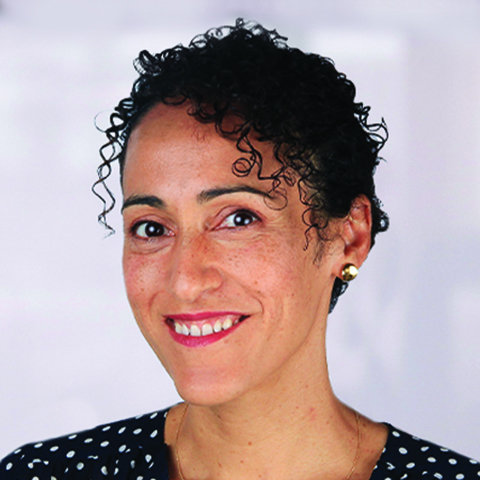Dear Neighbor,
What happens when it’s all, you know, over?
It’s hard to think of life after the pandemic, but it feels like we must. Mom-and-pop shops have relied on community support and government funding to keep their doors open. We need sustainable solutions moving forward.
We spoke to Larisa Ortiz, the managing director of research and analysis at Streetsense, a global strategy and design collective. She’s the author of the report “Fall 2020: Insights for the Public + Non-Profit Sectors,” which covers retail, real estate and travel. The community development expert spoke with Epicenter-NYC writer Jade Stepeney about what the future holds for city businesses and addressed why boroughs and outposts beyond Manhattan might be faring better. This Q&A is lightly edited for context and clarity.
First, can you tell us what got you thinking about life after the pandemic while we’re still in the middle of it?
Larisa Ortiz: My background is business districts and downtown revitalization. It immediately became apparent with the shutdown that small businesses were going to be significantly impacted. With the loss of small businesses at scale, we quickly recognized that the work we do would be at risk. We really began tracking and thinking about what we need to be planning, for now, that will impact us post-Covid. So, I always try to understand who might benefit from the changes in spending and living that are coming out of this. Policies, programs and resources take a long time to put together, so we always have to be thinking ahead in the public sector.
How has Covid-19 impacted the industries in your report? Let’s start with retail.
Ortiz: Essential retail businesses, many that remained open during the forced closure, were doing very well. Obviously, businesses that had to close did not. Businesses that did not have omnichannel sales, the ability to sell online as well as in person, were significantly impacted. There is uneven impact, and we’ve seen devastation in some elements of the industry. Sit-down restaurants that didn’t necessarily have the mechanisms to do takeout struggled.
What about travel?

Ortiz: Things have evolved as we cautiously emerged from a fall shutdown. Travel and tourism and businesses that service activities that can be done in a socially distant way have really benefited. There was a time in May when there was not a kayak left in the Northeast! People hadn’t necessarily known that these local resources were around so we had to dig deep to find them.
You mentioned omnichannel retail. What’s that?
Ortiz: It means having a diversified strategy for connecting with customers. You know, being able to buy online through a variety of mechanisms. Some small businesses sell on Amazon, Facebook Marketplace or Instagram. Others you have to go through a website. Connecting with your customers in online forums and enabling them to purchase and have the thing delivered is a second channel. There are multiple channels that you can connect with online in addition to in person.
What role does the local government in NYC play in helping with that recovery?
Ortiz: The city plays a significant role in terms of enabling recovery. Take outdoor dining. A business needs to be at about 75% capacity to survive. So, what happens when you can only have outdoor dining or 25% indoor dining? The city setting rules of engagement early on and making it easy to follow those rules helps. There are still problems with the program that the city can fix because it isn’t that coordinated. The local government needs to make it clear and easy as to what (businesses) should do. We need to offer solutions that keep people safe but also allow businesses to sell their products and goods.
Safety will be a huge concern for consumers moving forward, long after the pandemic is over. How can businesses work to meet the rising concern of safety and sanitation?
Ortiz: You know, we’ve come so far. Now that we know the virus is airborne, that changes the rules and expectations. It gives businesses more clarity on how we can lower rates of transmission and keep our economy functioning. In the piece I wrote, we talked about “Sanitation Theater,” but it can’t just be about theater. There can’t just be the perception of spaces being clean, it needs to be a reality.
There has been a trend of people moving from urban, metropolitan areas to more suburban areas. What does a fleeing urban population look like for local small businesses in NYC?
Ortiz: Within a metropolitan area, there are stronger districts and weaker districts. It comes down to the question, are your customers still there? In Midtown Manhattan, we can look around and see that when everyone was working from home, the customers disappeared. And we saw that no amount of placemaking or outdoor dining would bring them back. (Customers) are slowly returning, but it’s still not enough and we’ve seen that in the Midtowns of the world.
But I’m really surprised at how resilient the neighborhoods are. In Jackson Heights, businesses have seemingly been doing well. When you walk down the street, there’s a level of activity and vibrancy that you don’t get in Midtown because Jackson Heights is a residential neighborhood. I don’t think the narrative that “New York is going to hollow out,” is representative of the city as a whole. For Midtown Manhattan it’s a concern, but we have to make the distinction between the different kinds of neighborhoods within the city. For people who are leaving, the Catskills come to mind. It all comes down to are you losing or gaining customers? And that community is gaining customers.
Please help us grow this community by hitting forward on this newsletter, spreading word about its existence in your networks and asking folks to subscribe. Follow us on Facebook and Instagram. We also seek donations to pay our vendors and freelancers.









